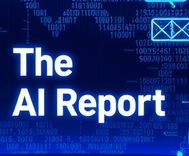Researcher: We can build safer tunnels with artificial intelligence

The AI Report
Daily AI, ML, LLM and agents news
Building Tomorrow's Tunnels: AI's Breakthrough for Unprecedented Safety and Efficiency
The very bedrock of our infrastructure, tunnels, are monumental feats of engineering. Yet, their construction, particularly the drilling and blasting phase, remains fraught with inherent risks. Daily threats like unexpected rockfalls, sudden water ingress, or encountering unpredictable geological conditions are a grim reality for those working deep underground. The question isn't just about constructing tunnels, but about how to build them safer, more precisely, and ultimately, more cost-effectively.
For too long, the critical decisions made in tunnel and mining projects have relied heavily on seasoned experience and, regrettably, subjective judgment. While valuable, this traditional approach presents significant limitations. During the planning stage, core samples and seismic data offer insights, but they are snapshots. As excavation progresses, rock mass is visually assessed, and drilling machine behavior is observed – for instance, rapid penetration might hint at weaker zones. But without the ability to "see" inside the rock, these assessments are plagued by uncertainty, creating dangerous blind spots.
Unlocking Hidden Data: The Power of Measure While Drilling (MWD)
The paradox of modern tunnel construction is that we are collecting an immense amount of data, far more than we actively utilize. A contemporary drilling machine is a data powerhouse, generating thousands of measurements every minute, often simply stored away. This treasure trove is known as "Measure While Drilling" (MWD) data. MWD data captures the rock's resistance, the water flushing requirements, and the pressure needed for drilling – essentially, a unique digital signature of the rock encountered.
Imagine harnessing this untapped data to predict what lies ahead, turning uncertainty into foresight. This is precisely where artificial intelligence, specifically machine learning, is revolutionizing the industry. Through advanced research, innovative machine learning models have been developed that can interpret MWD data to anticipate geological conditions before they are physically reached. This means predicting the type of rock, its inherent weakness, and whether reinforcement will be necessary.
From Reactive Measures to Proactive Safety
The practical application of these models is profound. As data streams in from the drilling machine, it's instantly transformed into a digital fingerprint. The machine learning model then rapidly compares this signature against a vast database of thousands of past cases, providing an immediate, informed suggestion about the rock type ahead. This entire process unfolds in mere seconds.
But the benefits extend beyond mere identification. These AI-driven models can also propose actionable strategies: determining the optimal blasting distance for the next round, or advising on the precise amount of reinforcement – such as extra bolts and concrete – needed before continuing excavation. This transition from reactive problem-solving to proactive prevention is the game-changer. Instead of reacting to a collapse, we can now act decisively to prevent it, safeguarding lives and resources.
Transforming Outcomes: Safety, Savings, and Sustainability
The societal gains from this technological leap are substantial. Tunnels are vital for modernizing transport, enhancing public transit, and reducing climate emissions. But their foundational requirement is safety. Rockfall accidents, for example, carry a devastating human cost and can incur astronomical financial damages. By empowering engineers with machine learning, we provide them with a sophisticated tool that augments their expertise, enabling them to make superior, data-backed decisions.
Furthermore, this innovative approach fosters greater efficiency and safety, making underground mining a more attractive alternative to traditional open-pit operations. This translates directly to reduced environmental impact on landscapes and ecosystems, promoting a better balance between essential resource extraction and nature conservation. The sustainability aspect is a powerful, often overlooked, benefit.
A Future Forged in Data and Intelligence
The true power of this technology lies in its scalability and continuous improvement. As AI models are deployed across more tunnel construction projects, they accumulate a wealth of real-world data, creating a powerful positive feedback loop: the more tunnels we build using this system, the smarter and more accurate the models become. This evolving intelligence can also be seamlessly adapted for various mining operations and international projects, providing a significant competitive advantage for those who embrace it.
The future of tunnel construction is no longer solely about advancements in explosives, steel, or heavy machinery. It is fundamentally digital, data-driven, and intrinsically smarter. Most importantly, it's about building with an unprecedented level of safety. With artificial intelligence, we gain the extraordinary ability to "see through the rock" – to understand what lies beneath the surface, long before we ever reach it. This isn't just an enhancement; it's a paradigm shift towards safer, more sustainable, and more efficient underground development.
Embrace the digital transformation. The next generation of infrastructure depends on our ability to harness intelligence and data for a safer, more predictable tomorrow.

The AI Report
Author bio: Daily AI, ML, LLM and agents news
